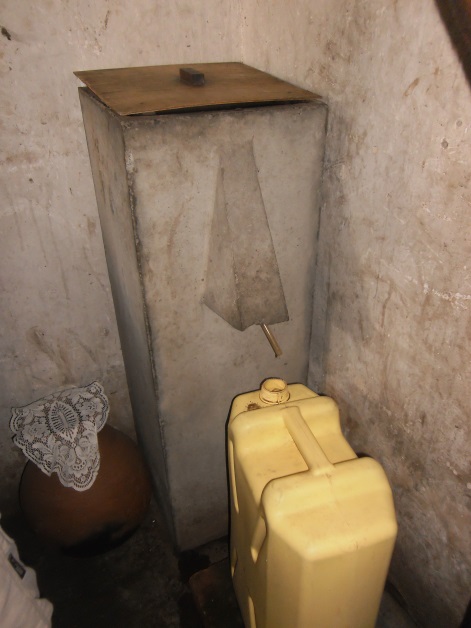01 Bio-Sand Filter Pot – Introduction
Introduction
Many people, especially in rural areas, suffer from diarrhoea and other water-borne diseases such as typhoid, cholera, salmonella, hepatitis, meningitis, Giardia, Hookworm etc. These diseases usually come from drinking water that has bad germs in it.
These germs usually come from excrement that has got into the water supply. Some people defecate in or near rivers or streams, and many people bathe in rivers and streams. Sometimes rain washes the germs into the stream or river. Even flies carry germs from excrement into the streams. The result is that nearly all streams and rivers have these harmful germs in the water. Even communities with wells or piped water supplies may be at risk. Germs can easily get washed into wells and pipes get broken and the water can get contaminated, or the place where the water comes from may get contaminated.
People drinking the water get ill because of these germs and often have to stay at home while they recover, or may have to travel to a clinic or hospital and pay for medical care. Many children and older people died from these diseases.
But there are ways that water can be made safe to drink. Here are some:
- Boiled water is much safer to drink because most germs are killed by boiling.
- Water can be put in a clear plastic bottle and left in bright sunlight for a whole day. The sunlight kills most of the germs.
- Water kept in a container for a day before drinking it is safer. Some germs like Cholera die after a few hours. But other germs might still be dangerous!
- Water can be filtered. This is the safest and best way to get rid of the germs.
What is a water filter?
A water filter is a device for removing unwanted things from water. There are a variety of types.
- Porous clay pot filter – water seeps through porous clay which removes sediment. BEWARE: the water will look clean, but the clay will not remove the germs. These filters are unsafe.
- Bag-of-sand filter – these also remove sediment, but do not remove germs.
- Ceramic filters – these are specially made filters you have to buy. They produce safe drinking water but are quite expensive and have to be replaced every year or two.
- Bio-sand filters – these use ordinary sand are the safest and most effective. The rest of this article is all about bio-sand filters.
What is a Bio-Sand filter?
A bio-sand filter uses nature to produce pure safe drinking water so that you can enjoy all the goodness of river, well or rain water without getting ill from bad germs. They are more natural and more effective than any other way of making water safe. The water produced is so pure that the Ugandan ministry of health has approved our water filters for making bottled water to sell! With a bio-sand filter you can enjoy all the goodness of river, well or rain water without getting ill from these germs.
The water filter is a large pot filled with sand. The filtration is done by a living bio-mat which grows in the top layer of sand. You pour water in the top and safe drinking water comes out of a hose in the side.


 How can you get a Bio-Sand Filter?
How can you get a Bio-Sand Filter?
- In some countries there are places where you can buy a factory made concrete or plastic filter pot. You can then fill it with stones and sand and make your own filter. They usually cost about $50.
- You may be able to buy large clay jars which you can use to make your own filter.
- You can make your own filter pot at very little cost using skills that most people have and, apart from some cement and a piece of hose pipe, using the materials which you can dig up or collect from a nearby river or stream.
- You could by a locally made concrete filter pot and have it installed for you.
The Story in Uganda
We started using large clay pots for our bio-sand filters in the Ruwenzori mountains of Uganda but we found difficulty in getting good quality clay. So we developed a way for local people to make their own concrete pots by first creating a mould of sun-dried mud which they then plastered with sand and cement. These pots have been very successful, but they take some skill to make. Some villagers became very good at making the pots and so set up a little business making and installing the sand filters for the rest of the community. There are now lots of these businesses across the mountains making low-cost filter pots and bringing safe drinking water to their communities.
The next article explains in detail how the filter works and how to use and maintain one.
